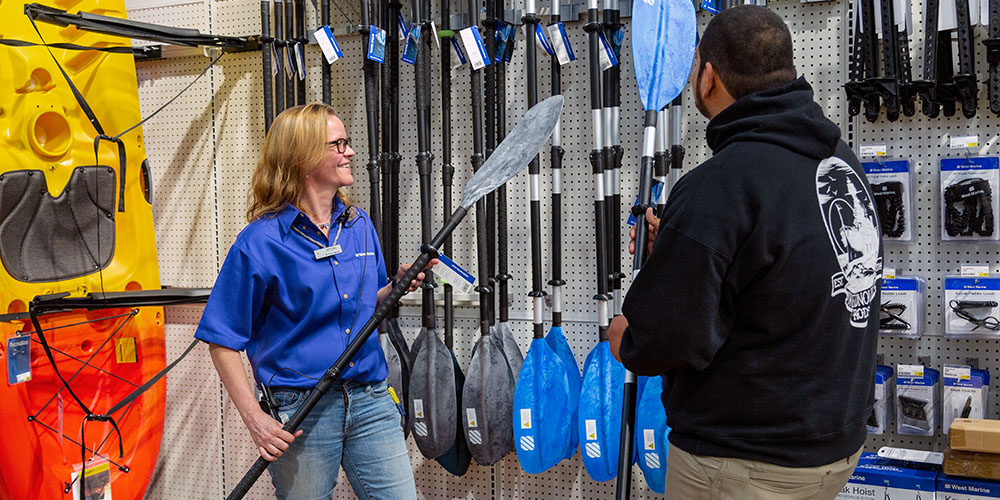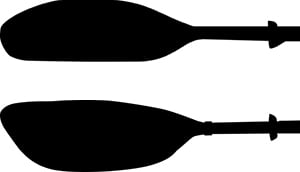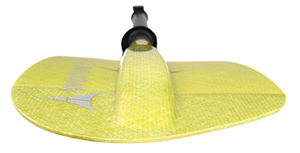
Recreational kayaking is a great way to experience the water and continues to grow as a popular sport among people of all ages. Although choosing the right kayak paddle for your adventure is mostly a matter of personal preference and paddling style, there are some general guidelines to follow for peak performance.
Paddles are measured in centimeters and average 210-250cm (6’10”-8’2”) long. The general rule is shorter and beginner paddlers need a shorter shaft with a smaller blade while larger, taller and more experienced paddlers need a longer shaft with a larger blade to transfer more power to move their weight, which also requires more effort.
A Rough Guideline for Paddler Height:
- under 5'4" ==> use a 215-220cm paddle
- 5'4"-6' ==> use a 220-230cm paddle
- 6'+ ==> use a 230-250cm paddle
It’s also important to note the width of your kayak. The wider the kayak, the longer the paddle you need to reach the water. Make sure to choose a paddle that clears the kayak’s gunwales while keeping proper paddle form and your knuckles don’t hit the deck. Tandem and sit-on-top kayaks typically use longer paddles.
Find the Right Paddle Style
Next, consider a lightweight and durable shaft for smooth performance. Fiberglass shafts are lighter than aluminum shafts and they don’t get cold. Look for oval shaft designs that allow for a natural hold and less grip fatigue. Smaller shaft diameters are also better suited for smaller hands.
Shafts come as one solid piece or in adjustable/telescoping lengths to cater to families with different paddle size needs. If you’re backpacking or have limited storage space, a compact two- or four-piece kayak paddle is a great solution. Straight shafts are widely used by most paddlers however bent shafts keep the wrist at less of an angle for less strain.

Bent Shaft vs. Straight Shaft Example
Some kayak paddle shafts come with drip rings to prevent water from running off the paddle and entering the kayak. Another feature are ferrule snaps that connect two-piece shafts and allow blade feathering, which is the amount of twist and angle between the paddles, usually between 0-60?. Feathering a blade allows you to offset the paddle for left-handed or right-handed dominant paddlers. The greater angle in the blade offset positions one end of the paddle to slice through headwind and create less drag. In a long paddle adventure, every effort to minimize drag helps.
Blade Shape and Size

Symmetrical Blade vs. Asymmetrical Blade Example
The blade shape of your kayak paddle can go a long way to making your time on the water more enjoyable. Basic paddles include symmetrical blades but more paddlers prefer asymmetrical blades because they have a greater surface area for a more efficient paddle. Symmetric blades work best with a high, vertical stroke where the blade is evenly distributed through the water, creating even force. Asymmetric blades work best at a low angle for an efficient pull.
Look for blade shapes with a dihedral angle (see example) for even water displacement (less flutter) and a smooth, stable pull through the water. The rib down the center of a dihedral blade also adds strength. A flat blade requires more effort and potential for fluttering but moves more water for propulsion. This additional effort can lead to grip and joint fatigue after a long day of paddling.

Dihedral Ridge Example
Blades are made from a variety of materials including wood, carbon composite and fiberglass. Reinforced nylon blades are durable enough to withstand rocks and rough waters. Carbon and fiberglass blades are lighter options ideal for long paddling sessions or for people with shoulder issues.
Consider high visibility blade colors like orange and yellow for touring safety or blue and green colors to blend into the water while fishing. Angler-specific paddles also come with a notch in the blade to help rescue fishing line that might get caught in a tree without you having to risk falling out of the kayak to reach it.

Angler Blade Notch Example
Most leisure paddling adventures use a low angle entry of the paddle into the water. This paddling style is best with a larger blade and longer shaft. However, paddlers looking for speed and quick maneuvering use a smaller blade and a shorter shaft for high angle aggressive strokes in the water. Smaller blades also work well for technical paddling like whitewater kayaking.
Related